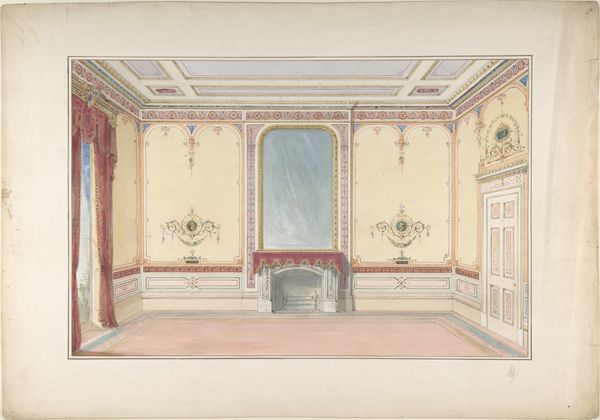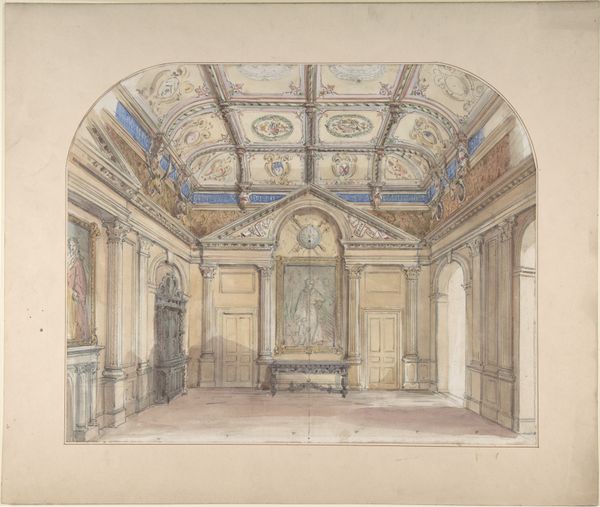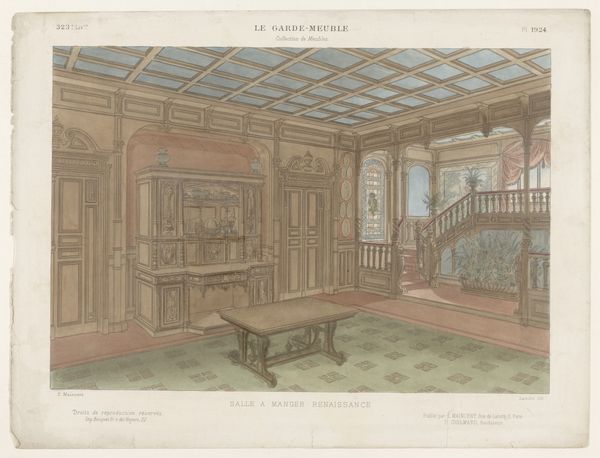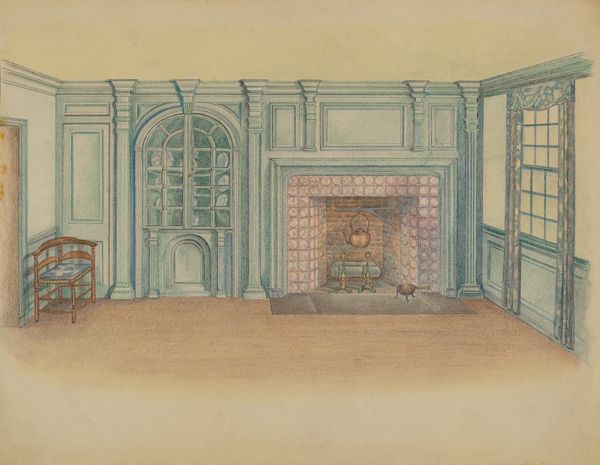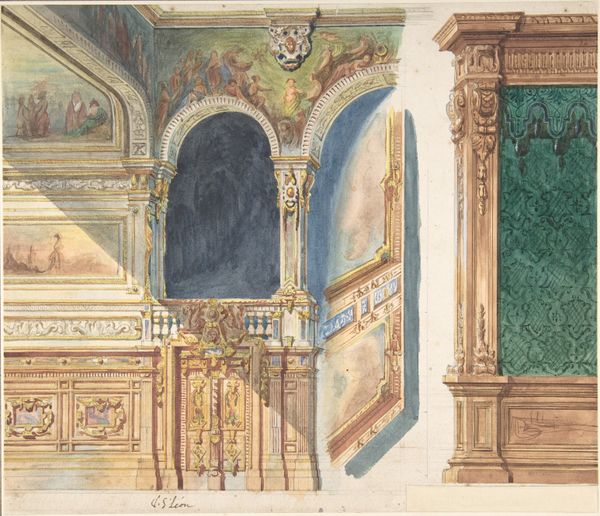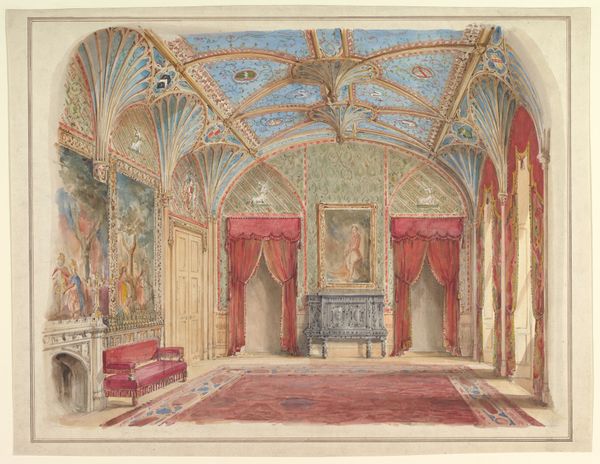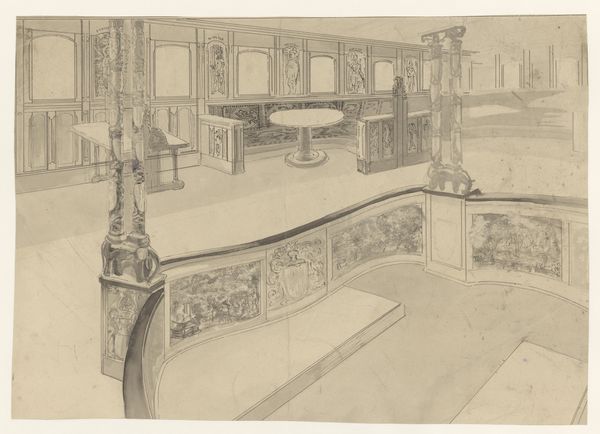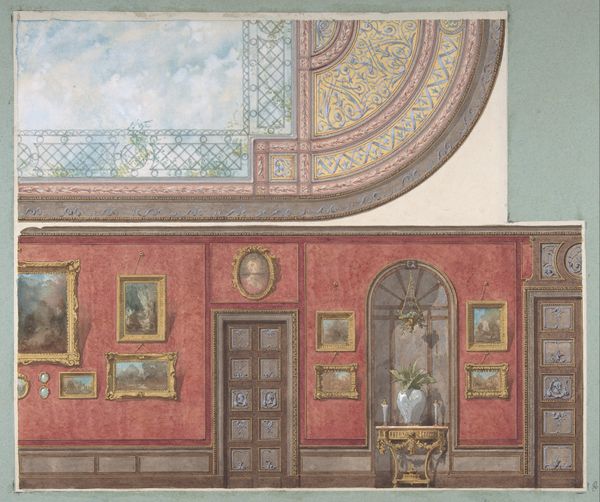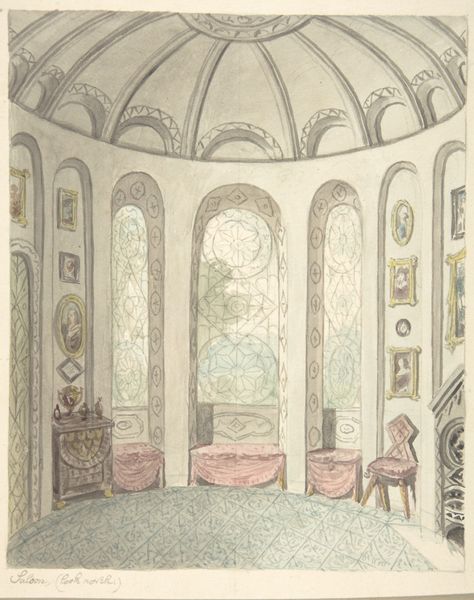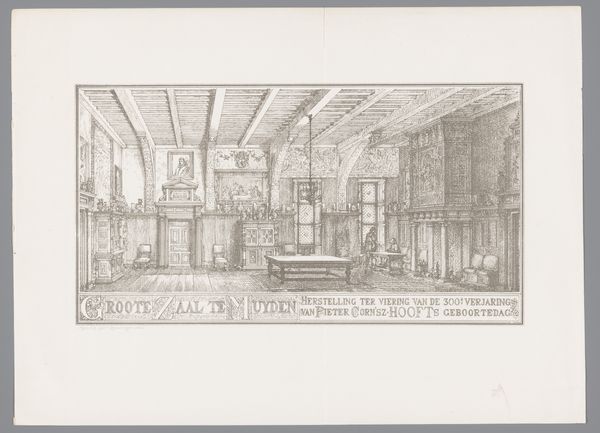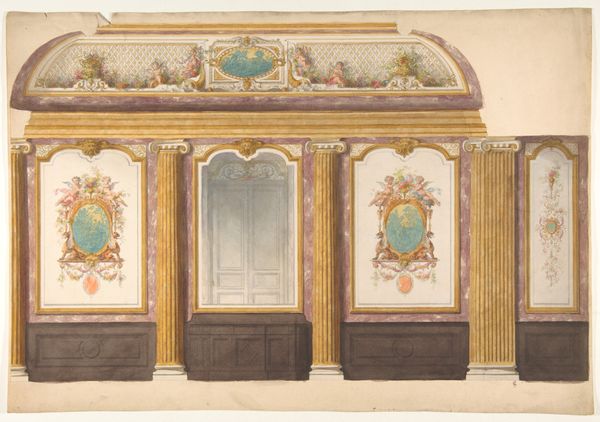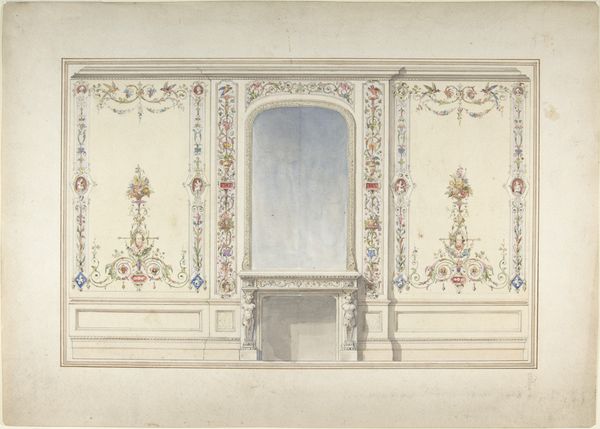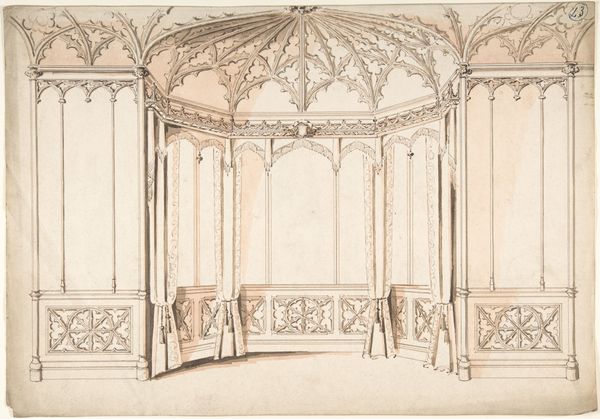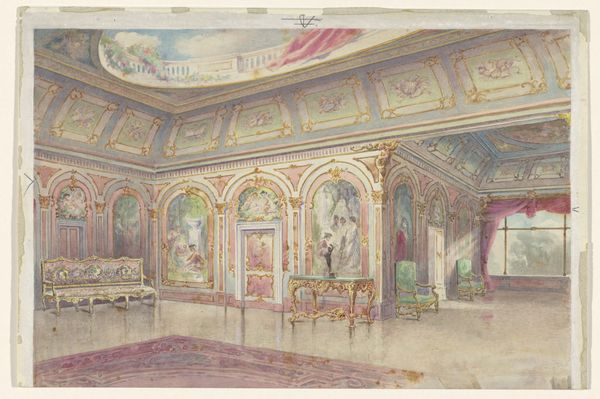
drawing, print, architecture
#
drawing
# print
#
traditional architecture
#
history-painting
#
academic-art
#
architecture
Copyright: Public Domain
Editor: This is Eugène Cicéri’s "Design for a Stage Set," dating from sometime between 1830 and 1890. It’s a drawing or print now held at the Met. There's this ornate, historical interior—almost church-like, but definitely a set. The level of detail is fascinating! What do you see in this piece beyond its immediate visual appeal? Curator: I see a glimpse into the cultural and political climate that embraced historical revivalism, especially in theater. These stage designs reflect a fascination with the past, often idealized or romanticized. Cicéri was incredibly influential in Parisian theaters, and these designs served a public hungry for visually spectacular drama. How does the set's implied use, a stage, impact your perception of it? Editor: That's a good point! Knowing it’s a stage set almost feels like a commentary itself, that history is a performance, a carefully constructed image. It definitely takes on a different meaning knowing this wasn't intended as documentation, but as theatrical fiction. Curator: Exactly. Consider also the choice of architectural details: Gothic arches, religious iconography... These evoke power, tradition, and even a certain national identity depending on the production it was intended for. Stage design doesn't merely provide a backdrop; it actively shapes how the audience understands the narrative and its relationship to historical power structures. Does this theatrical purpose shift how we view history painting itself, blurring lines between artistic expression and political messaging? Editor: That's definitely something to think about. The layers of meaning are far deeper than just a pretty picture! I never considered how powerful set design could be as a reflection of broader social narratives. Curator: And the fact it ended up in a museum makes you reflect on what gets displayed as the highest order of cultural value, doesn’t it? Food for thought on how cultural institutions continue this complex interplay of power, art, and perception.
Comments
No comments
Be the first to comment and join the conversation on the ultimate creative platform.
